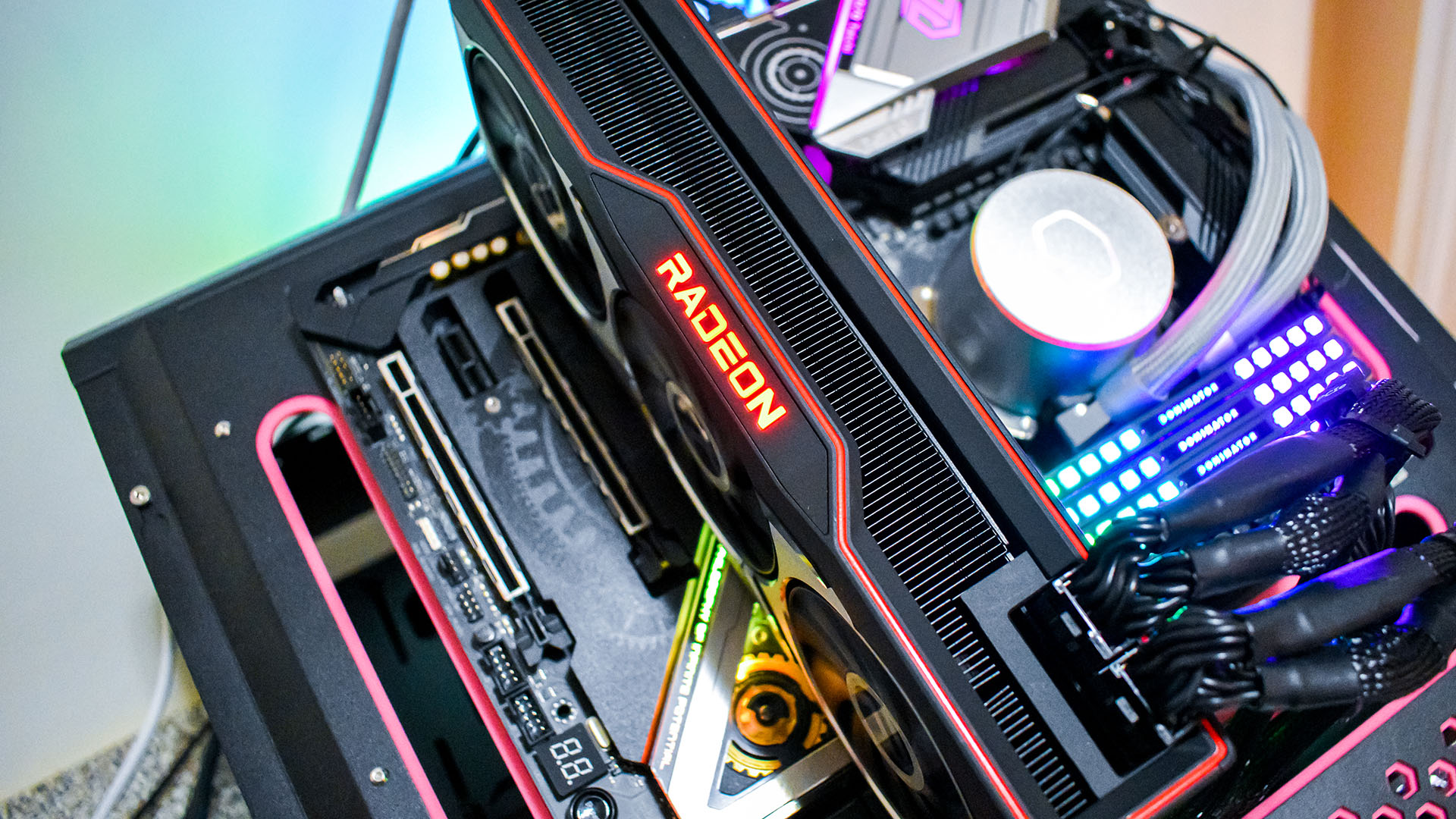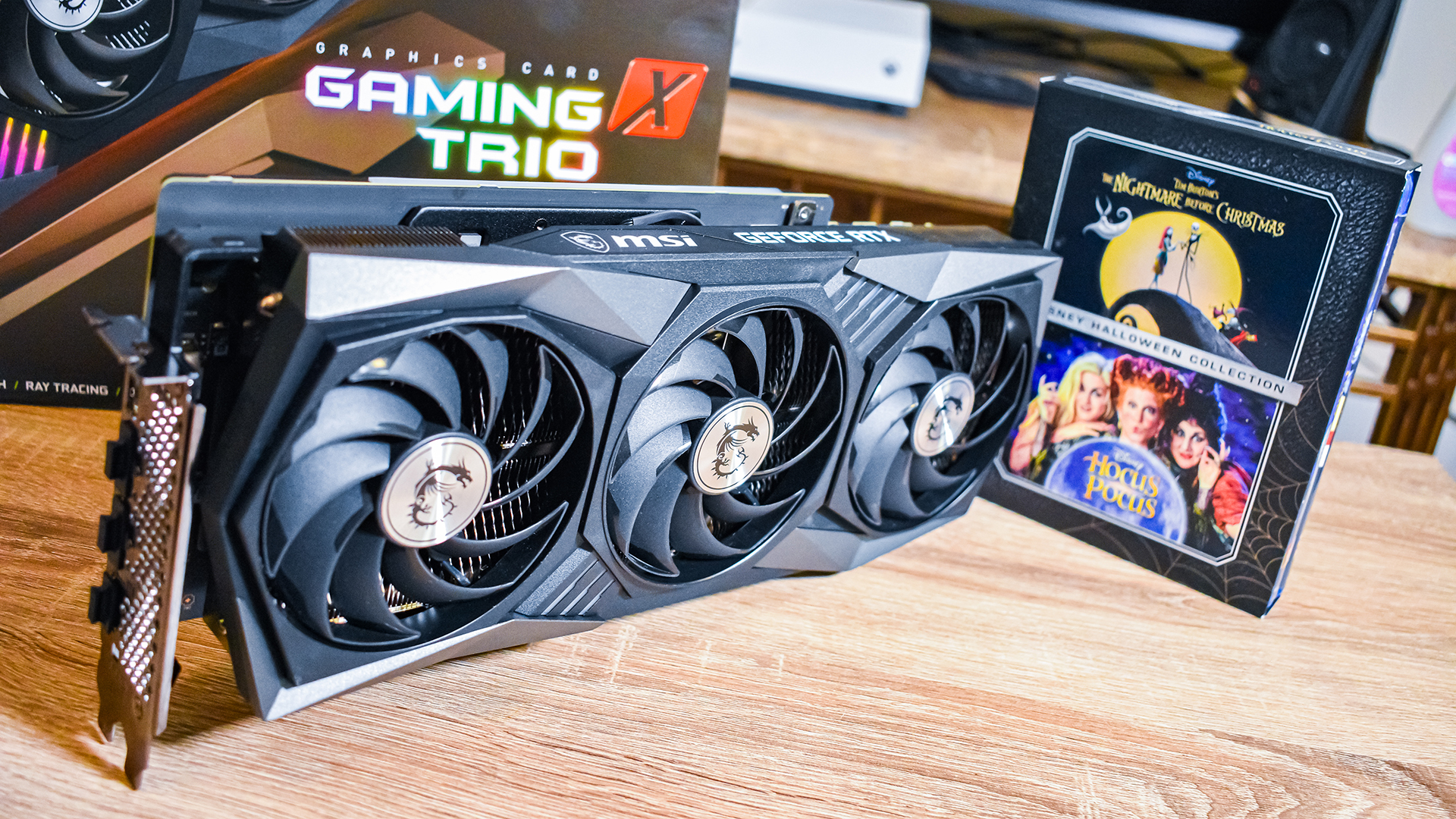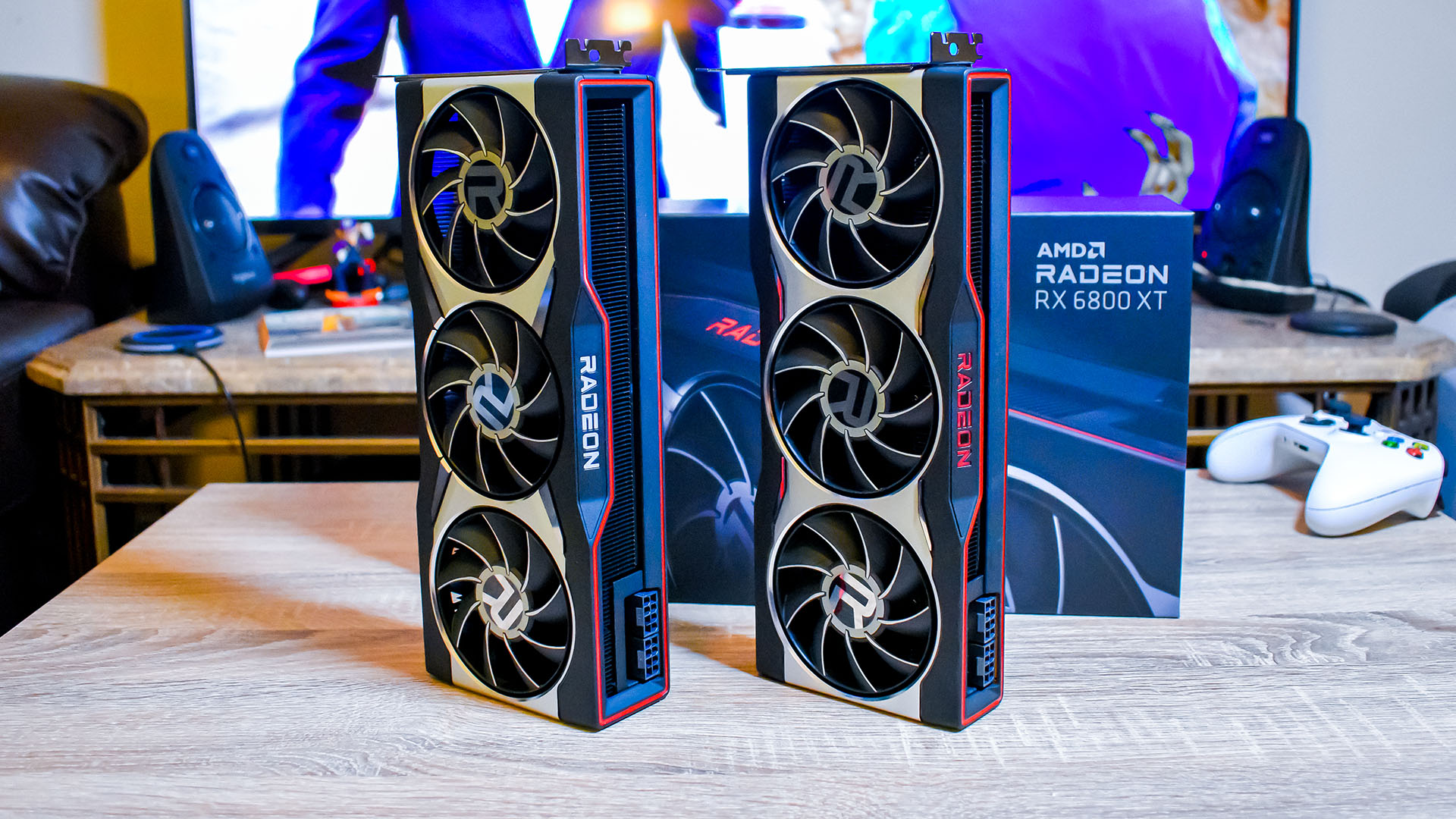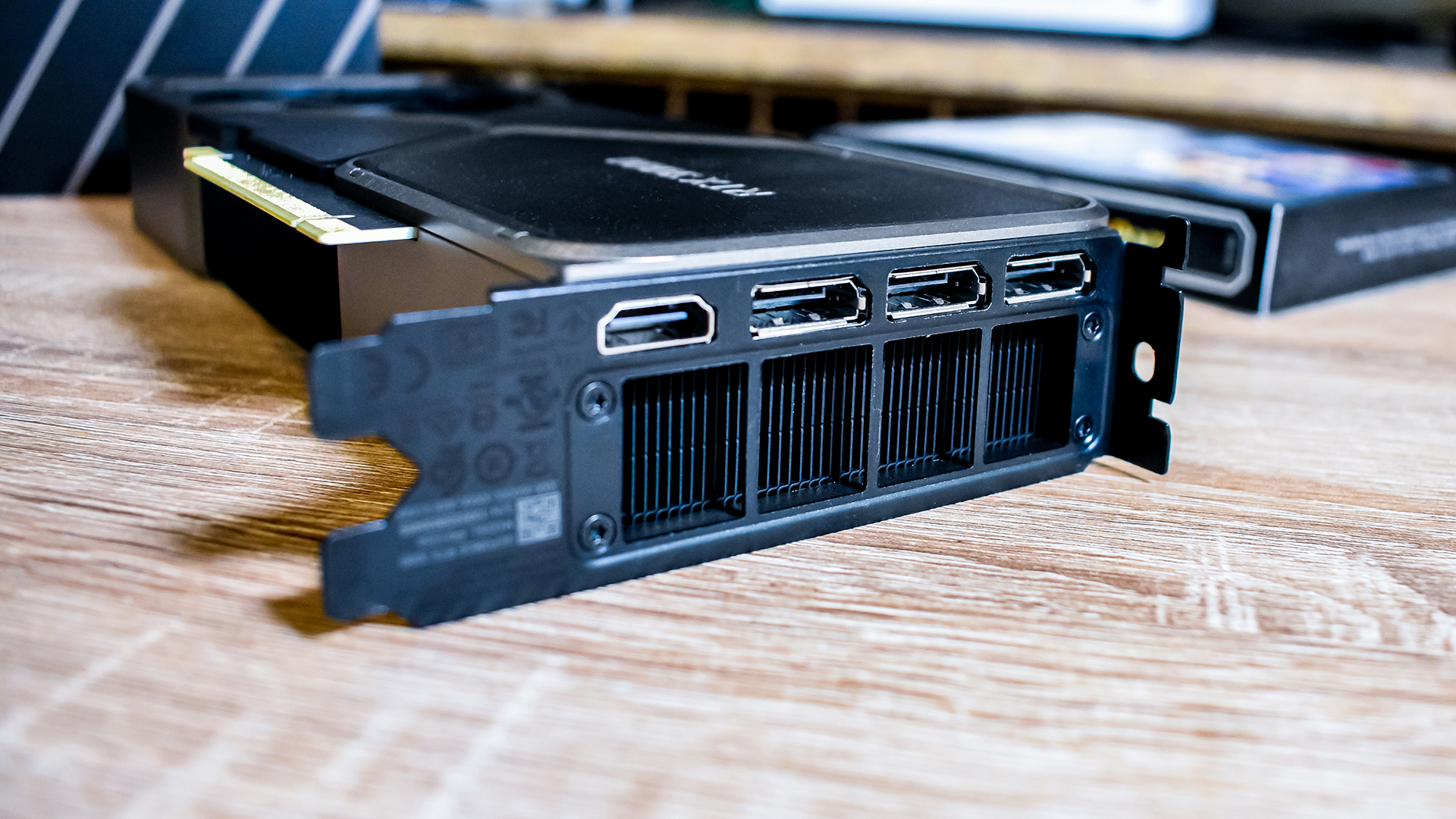Nvidia GeForce RTX 3080 vs Radeon RX 6800 XT - which graphics card is right for you?
It's been nearly half a year since the Nvidia GeForce RTX 3080 and the AMD Radeon RX 6800 XT dropped in September and October 2020, respectively. And while it's still incredibly hard to buy any graphics card right now without shelling out for a whole gaming PC, there is still steep competition between these graphics cards.
Now more than ever, the right graphics card for you between these two heavyweights is going to come down to what games you plan on playing, what features you're looking for, and more than anything – which one you can actually find in-stock long enough to actually buy.
But if you're not sure where to even start when looking at these excellent graphics cards, we'll help you pick which is the right one for your needs.

Nvidia RTX 3080 vs Radeon RX 6800 XT price
In the past, making a price comparison between flagship graphics cards was pretty easy – just take a look at the MSRP and call it a day, but that's not quite enough anymore. While we do know the MSRP for both graphics cards – $699 (£649, about AU$950) for the RTX 3080 and $649 (likely to be £649, AU$960) for the Radeon RX 6800 XT, you'd be hard-pressed to find either graphics card for that price, even if you are lucky enough to find it in stock.
Even in the Newegg Shuffle that's been going up on a nearly daily basis, you'll find mostly third-party versions of the RTX 3080 and Radeon RX 6800 XT, with highly inflated prices. For instance, the MSI RTX 3080 Gaming X Trio is currently listed on Newegg for $1,149. And even at that price, it's totally sold out.
If you look at a website like StockX, where scalpers hawk products for higher-than-street prices, you can get a pretty good idea of how much these graphics cards actually cost right now.
Just looking at the reference designs for the graphics cards, the Nvidia GeForce RTX 3080 is way more expensive, with the last sale going for $2,600 at the time of writing. That's nearly a $2,000 increase over the MSRP. The Radeon RX 6800 XT, on the other hand, is still expensive but it's not as expensive. Team Red's flagship is going for just $1,809, but it looks like far fewer of them have been sold through the website.
We don't condone scalping, but if you are desperate enough to buy a scalped graphics card right now, the AMD Radeon RX 6800 XT will give much better value for the money right now. Obviously, that may change in the future.

Nvidia RTX 3080 vs Radeon RX 6800 XT specs
Because the RTX 3080 and the Radeon RX 6800 XT are built on completely different architectures, you can't really make an apples to apples comparison about graphics card specs. But we're going to try anyways.
The Nvidia GeForce RTX 3080 has 8,704 CUDA cores, which is what Nvidia calls its shading units, spread across 68 streaming multiprocessors. This is paired with 10GB of GDDR6X memory on a 320-bit bus.
The AMD Radeon RX 6800 XT has 4,608 shading units across 72 compute units. That's paired with 16GB of VRAM on a 256-bit bus. So, on paper, it looks like the Radeon RX 6800 XT is much weaker.
However, the AMD Radeon RX 6800 XT has a much higher clock speed, and has a unique Infinity Cache that helps to more efficiently move data from the VRAM to the actual GPU. That does help with bandwidth, but it's not enough to make the AMD Radeon RX 6800 XT keep up with the RTX 3080 100% of the time, though it can hold its own.
You probably noticed the massive difference in VRAM, too, and that's definitely where the Radeon RX 6800 XT pulls way ahead of the Nvidia competition. We're not quite at a point where the 6800 XT's 16GB of VRAM is totally necessary, but it should give some peace of mind when thinking about games coming in the future. Keep in mind, though, there's really no such thing as future proofing when it comes to gaming PCs, so you shouldn't base too much of your decision on what will be good 5 years down the line.

Nvidia RTX 3080 vs Radeon RX 6800 XT performance
While the Nvidia GeForce RTX 3080 has more theoretical raw power and the Radeon RX 6800 XT has theoretically faster memory bandwidth thanks to the Infinity Cache – not to mention more memory, the two graphics cards trade places depending on the game you're looking at.
Just looking at the recently-released Resident Evil Village performance, the Radeon RX 6800 XT is extremely competitive with the RTX 3080, even surpassing it at 1440p with ray tracing disabled. With ray tracing enabled, however, the RTX 3080 takes a very substantial lead, even though this game doesn't support Nvidia's performance-boosting Deep Learning Super Sampling (DLSS) technology.
That gap will widen quite a bit in games that do support DLSS, though, and you just have to look at Cyberpunk 2077 to see it. In that game, the Nvidia GeForce RTX 3080 nearly doubles the performance of the Radeon RX 6800 XT before enabling DLSS at 1080p. And, when you enable DLSS, that performance lead skyrockets to nearly 4x the framerate.
So, our advice would be to look at the games you know you're going to be playing the most, and think about whether or not ray tracing is something you actually care about. If you do want to turn on that eye candy, you're probably going to want to go with the RTX 3080 right now.
However, in pure rasterization performance, the two graphics cards are incredibly close still. And especially if you can find an AMD Radeon RX 6800 XT for half the price of what an RTX 3080 is going for, that similar level of non-ray tracing performance is pretty appealing.

Nvidia RTX 3080 vs Radeon RX 6800 XT features
While gaming performance is likely going to be the biggest reason to buy one graphics card over another, there are a ton of features that each of these graphics cards bring to the table that isn't just raw performance.
Nvidia has one of the most compelling features for our current moment, where we're all working from home, and it wasn't even originally pitched for that. Nvidia broadcast uses the Tensor cores in Nvidia's Ampere and Turing graphics cards to filter out background noise from your microphone, and can even replace your background in a video call. So, just by virtue of having an Nvidia graphics card in your PC, you can get rid of a lot of distractions while telecommuting.
In contrast, most of AMD's extra features still revolve primarily around gaming. One of the biggest and most recent of these is AMD Link. This will let you connect to your AMD-powered gaming PC remotely to play games or even run non-gaming programs through another PC or a smartphone. You can even let a friend link into your PC, so you can play local co-op games with them, even if you're anything but local.
There are plenty of features that boost performance, too. Of course, Nvidia has DLSS, which uses AI to upscale games to give you much better performance without drastically impacting image quality. This only works in games where developers have actively implemented the technology, though, so you will want to make sure games support it.
AMD is working on something to compete with DLSS, FidelityFX Super Resolution, but it's not available yet – though it is expected sometime this year. AMD does have contrast-adaptive sharpening. CAS is basically a sharpening filter that will take colors of the scene into consideration, so it doesn't look awful when running at a lower resolution. This is something that you can enable when you're, say, running a game at 1600p on a 4K monitor.
from TechRadar - All the latest technology news https://ift.tt/3w8ArQR
No comments